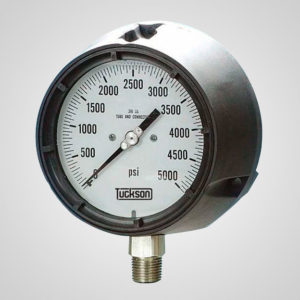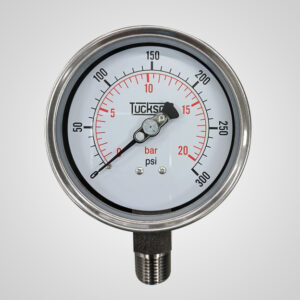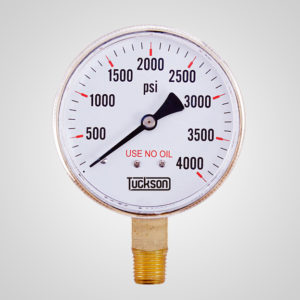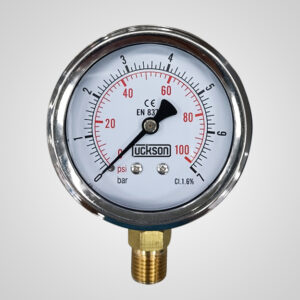Description
Low Pressure Gauge
Applications
Low Pressure Gauge is ideal for measurement of low pressure and vacuum. Used on natural gas and dry air applications. Example: low pressure pneumatic systems, gas burners, etc.
Standard Features
Sizes
2.5″(63mm) – Other sizes are available
Accuracy
3-2-3% of full scale ANSI/ASME Grade B
Case material
Steel black painted
Window
Acrylic
Wetted Parts
Cu-alloy
Operating Temperature
Ambient: -20 to 60°C (-4°F to 140°F)
Process fluid
max 60°C (140°F)
Dial
Aluminium with black & red markings on with background
Pointer
Black aluminium
Connection
1/4″NPT or BSP, lower & back mount
Ranges
0…10”H2O to 0…240”H2O (0…25mbar to
0…600mbar)or equivalent other units of pressure or vacuum
Working pressure
75% of full scale
Protection Degree
IP55
Installation tips
Pressure gauges mounted directly on piping should be assembled with reasonable care, always using the wrench grip provided on the pressure connection to secure it to the threaded fitting.
Do not use the gauge case as a means of tightening the connection.
In order to extend the service life and continued accuracy, the gauge should be protected as far as possible from effects of mechanical vibration. It is desirable to isolate it from severely vibrating machinery.
The gauge may be rigidly mounted to a non-vibrating surface and connected to the pressure source using flexible tubing.
Tip: we recommend the use of Gauge Cock Valves
Follow us on Pinterest






